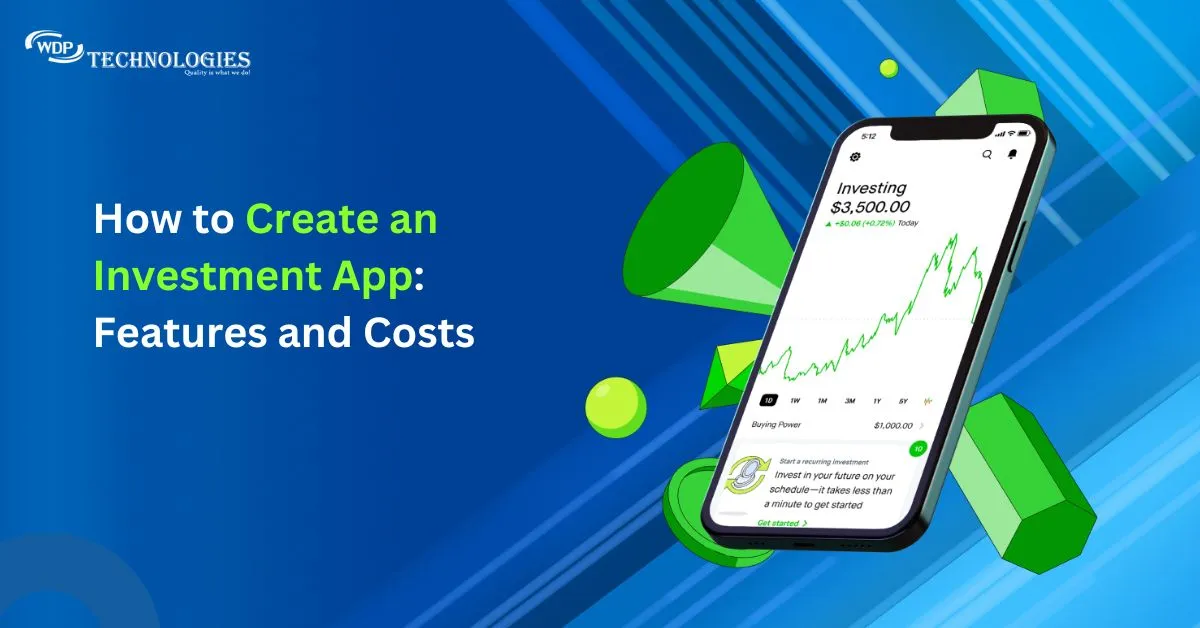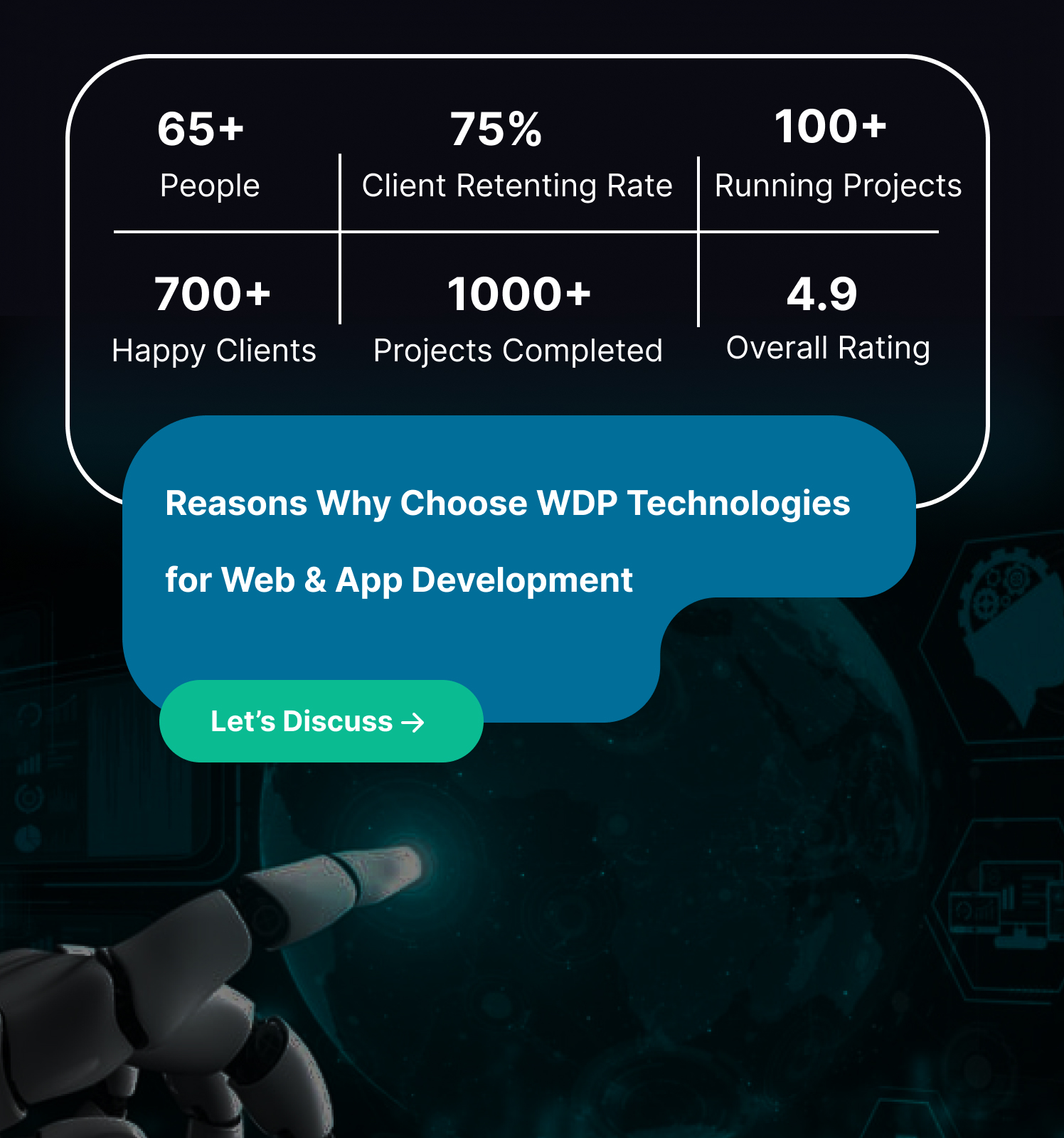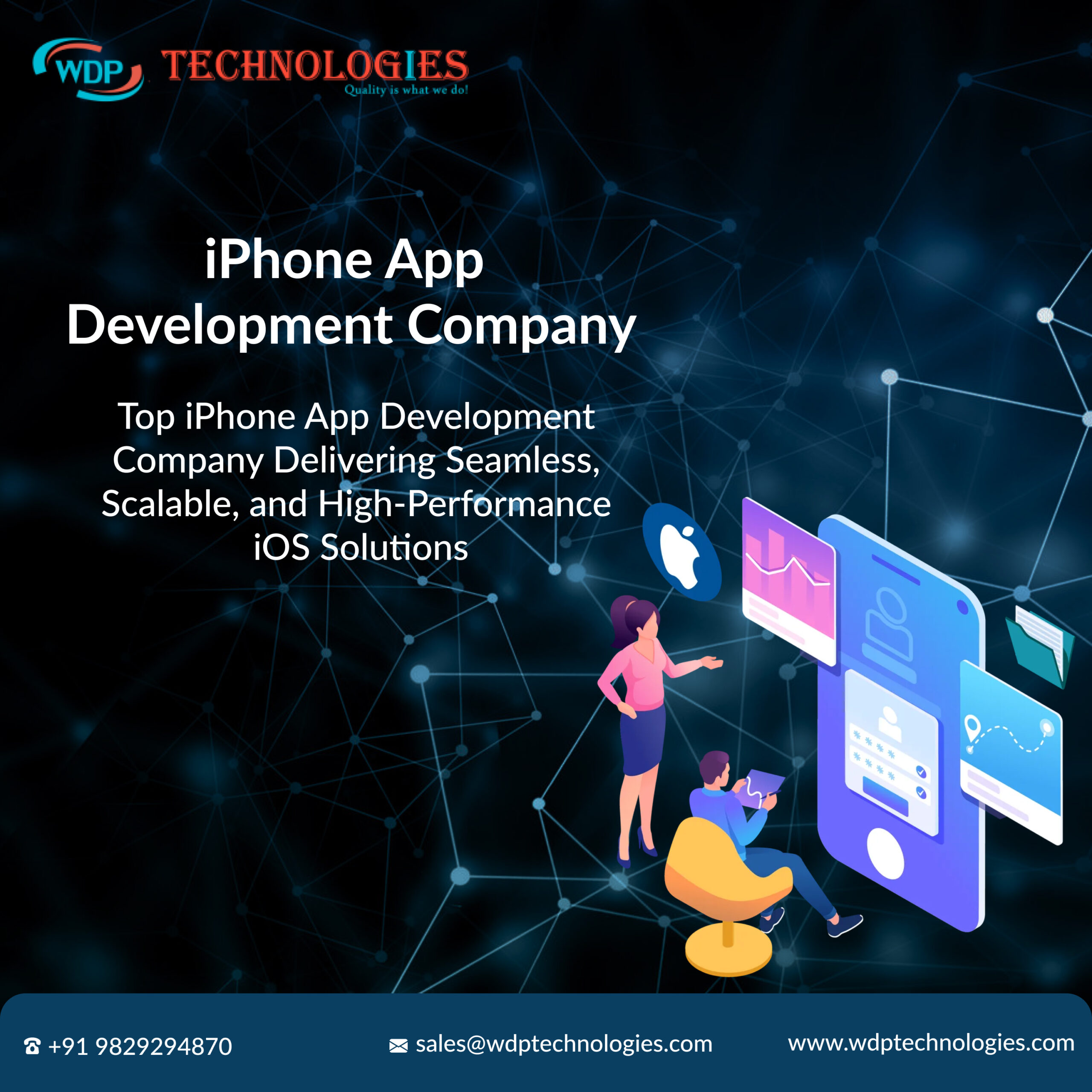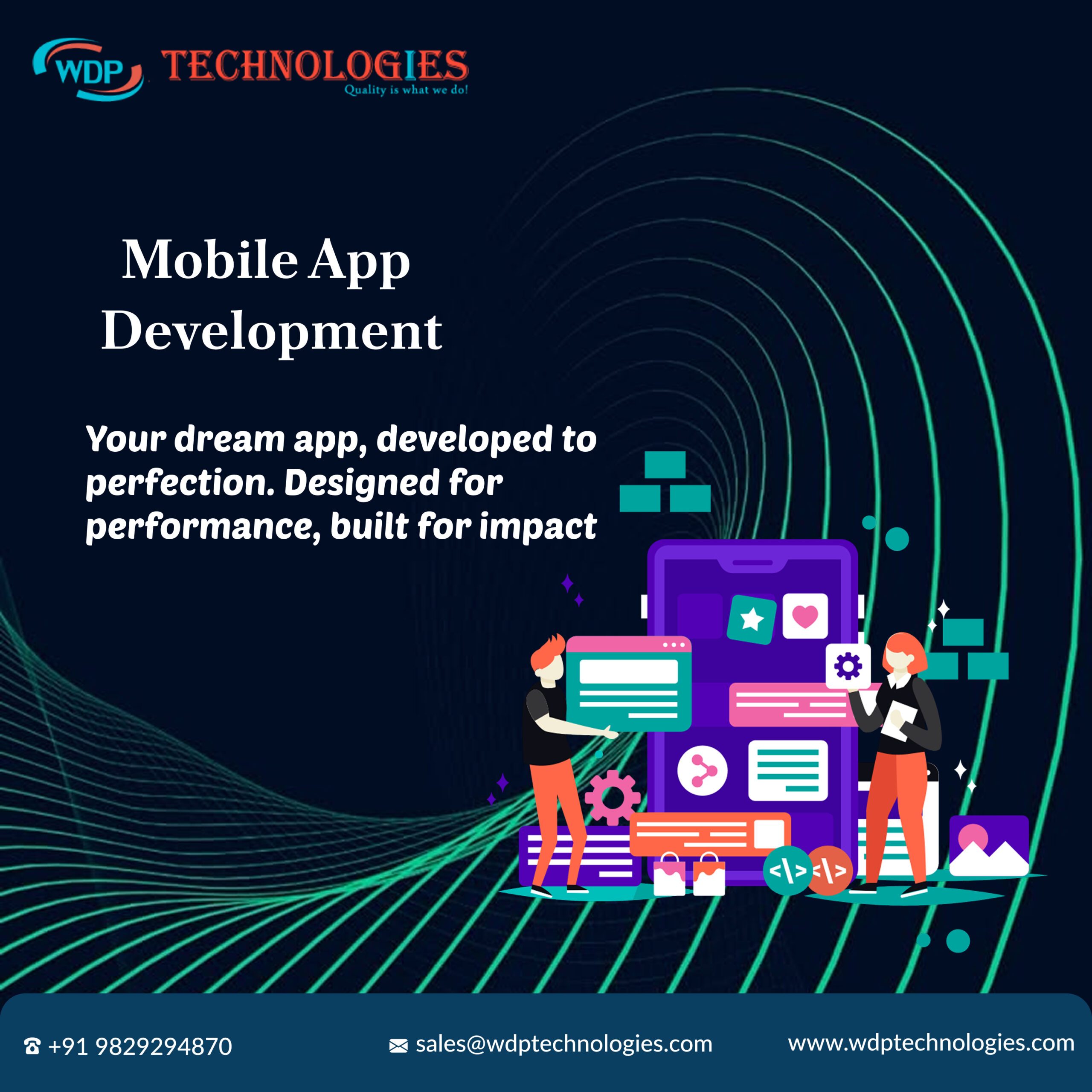Are you ready to dive into the world of finance and tech? Buil an investment app in 2024 offers an exciting opportunity to blend cutting-edge technology with the dynamic world of investing. Whether you’re an entrepreneur with a brilliant idea or a developer eager to create something impactful, this blog is your go-to guide.
In today’s rapidly evolving market, investment apps are not just about tracking stocks—they’re about empowering users to make informed decisions and manage their portfolios efficiently. But where do you start? What features will resonate with your audience? And how do you ensure your app stands out in a crowded marketplace?
In this blog, we’ll walk you through everything you need to know to build an investment app. From understanding market trends and defining your app’s unique features to navigating the technical and regulatory landscapes, we’ve got you covered. So, let’s embark on this journey together and turn your vision into a reality. Ready to make your mark in the investment world? Let’s get started!
Understanding the Investment App
An investment app is a digital platform designed to facilitate and enhance the management of personal and professional investments. These apps provide users with a range of tools to monitor and grow their financial portfolios, including real-time market data, trading functionalities, and detailed analytics. They often feature portfolio management capabilities, allowing users to track their investments in stocks, bonds, cryptocurrencies, and other assets.
Investment apps may also offer educational resources to help users understand financial concepts and make informed decisions. With the integration of AI and algorithms, these apps can provide personalized investment recommendations and automated portfolio management through robo-advisors. Additionally, investment apps ensure robust security measures to protect user data and comply with financial regulations, making them a comprehensive solution for managing investments efficiently and effectively.
Investment App Market Stats
The investment app market is booming. Here are some key stats:
- Market size: Valued at USD 100 Billion in 2023 and expected to reach USD 237.3 Billion by 2030, growing at a CAGR of 25%.
- User growth: Over 130 million people used stock trading apps in 2021, a 49% increase from 2020.
- Revenue: Stock trading apps generated $22.8 billion revenue in 2021.
- Dominance: Robinhood is a leading player with 16.3 million active users in 2021.
- Growth drivers: Technological advancements, increased accessibility, changing investor behavior, and expanding investor education fuel market growth.
Must Have Features TO Implement While Build an Investment App
When build an investment app, incorporating a comprehensive set of features is crucial to provide users with a robust and user-friendly experience. Here are 15 must-have features to consider, each detailed in its own paragraph:
1. Secure Login and Authentication
Ensuring the security of user accounts is paramount for an investment app. Implement secure login methods such as multi-factor authentication (MFA) and biometric options like fingerprint or facial recognition. These measures help protect sensitive user data and prevent unauthorized access, which is crucial in maintaining trust and safeguarding financial information.
2. Comprehensive Dashboard
A user-friendly dashboard serves as the central hub for managing investments. It should display an overview of the user’s portfolio, including key metrics such as total value, gains or losses, and asset allocation. This feature allows users to quickly assess their financial status and make informed decisions.
3. Real-Time Market Data
Access to real-time market data is essential for making timely investment decisions. Ensure your app provides up-to-date quotes for stocks, indices, and other financial instruments. Real-time data helps users react swiftly to market changes and seize investment opportunities as they arise.
4. Trading Capabilities
Enable users to execute buy and sell orders directly from the app. Support various order types, including market orders, limit orders, and stop-loss orders. Efficient trading functionality ensures users can manage their investments effectively and take advantage of market movements.
5. Interactive Charts and Technical Analysis
Provide interactive charts and technical analysis tools to help users analyze market trends and make data-driven decisions. Features such as historical price charts, technical indicators, and trend lines enhance users’ ability to conduct thorough market research and refine their investment strategies.
6. Personalized Recommendations
Incorporate AI-powered insights to offer personalized investment recommendations based on users’ financial goals, risk tolerance, and investment behavior. Tailored suggestions help users optimize their portfolios and discover opportunities that align with their individual preferences and objectives.
7. Robo-Advisors
Integrate robo-advisors to automate portfolio management and investment decisions. Robo-advisors can provide users with diversified portfolio suggestions and ongoing rebalancing, making it easier for those who prefer a hands-off approach to investing.
8. Educational Resources
Offer a wealth of educational resources, including articles, videos, and tutorials on investment strategies and financial literacy. Providing users with knowledge about investing principles and market dynamics empowers them to make more informed and confident decisions.
9. Price Alerts and Notifications
Implement customizable price alerts and notifications to keep users informed about significant market movements and changes in their investments. Alerts can be set for specific price levels, percentage changes, or news updates, ensuring users never miss critical information.
10. Portfolio Tracking and Reporting
Enable users to track their portfolio performance with detailed reporting features. Include metrics such as total return, individual asset performance, and portfolio diversification. Comprehensive reporting helps users evaluate their investment strategies and monitor progress towards their financial goals.
11. Secure Data Encryption
Ensure that all user data and transactions are protected through advanced encryption techniques. Secure data encryption safeguards sensitive information, such as personal details and financial transactions, against unauthorized access and cyber threats.
12. Fraud Detection and Prevention
Incorporate fraud detection systems to monitor for suspicious activities and potential security breaches. Implement measures such as transaction monitoring, anomaly detection, and user behavior analysis to prevent fraudulent transactions and protect user accounts.
13. Customer Support
Provide robust customer support options within the app. Include features such as in-app chat support, email assistance, and a help center with FAQs and troubleshooting guides. Efficient customer support ensures users can quickly resolve any issues or questions they may have.
14. Regulatory Compliance
Ensure that your app adheres to relevant financial regulations and standards. Implement features that support compliance with legal requirements, such as tax reporting, investment limits, and data protection regulations. Regulatory compliance helps build trust and ensures the app operates within legal frameworks.
15. Privacy Controls
Offer users control over their privacy settings and data sharing preferences. Allow users to manage what information they share and with whom, and provide clear privacy policies outlining how their data is used and protected. Empowering users with privacy controls enhances their trust and confidence in the app.
Steps To Build an Investment App
Build an investment app involves a series of structured steps to ensure its success, from initial planning to post-launch maintenance. Here’s a comprehensive guide to help you navigate the process:
1. Define Your Vision & Objectives
The first step in building an investment app is to clearly define your vision and objectives. Start by identifying the primary purpose of your app—whether it’s designed for stock trading, portfolio management, financial education, or a combination of these elements. Understanding your app’s core purpose will guide the development process and help you make strategic decisions. Additionally, pinpoint your target audience. Determine whether your app will cater to beginners, experienced investors, or specific demographic groups such as millennials or retirees. Knowing your audience will shape the app’s features and user experience, ensuring it meets their needs and expectations.
2. Conduct Market Research
Conducting thorough market research is crucial for the success of your investment app. Begin by analyzing existing competitors to understand their features, strengths, and weaknesses. This will help you identify gaps in the market and areas where your app can offer unique value. Additionally, keep an eye on current market trends, such as emerging technologies and shifting user preferences. Gather user feedback through surveys or interviews to validate your app concept and refine your feature set based on real-world insights. This research will inform your development process and help you create an app that resonates with your target audience.
3. Outline Key Features
Outlining the key features of your investment app is a vital step in the development process. Decide on the core features that are essential for your app, such as real-time market data, trading functionalities, portfolio management, and educational resources. Each feature should enhance the user experience and align with the app’s overall purpose. Additionally, identify unique selling points that will differentiate your app from competitors. This could include innovative tools, advanced analytics, or personalized investment recommendations. Defining these features early on will provide a clear roadmap for development and ensure your app offers value to users.
4. Create a Wireframe and Design
Creating a wireframe and design is crucial for visualizing the structure and user interface of your investment app. Start with wireframing, which involves sketching out the basic layout and flow of the app. This helps in organizing content and functionality in a logical manner. Once the wireframe is finalized, focus on the user interface (UI) and user experience (UX) design. The design should be intuitive, engaging, and aligned with your brand. A well-designed UI/UX ensures that users can navigate the app easily, access features effortlessly, and enjoy a seamless experience.
5. Choose the Technology Stack
Choosing the right technology stack is essential for the development and functionality of your investment app. Select front-end technologies and frameworks that will power the user interface, such as React Native or Flutter. For back-end development, choose server technologies, databases, and APIs that will handle data management and functionality, such as Node.js or Django. Additionally, prioritize security measures by implementing encryption protocols, secure authentication methods, and fraud detection systems. The technology stack you choose will impact the app’s performance, security, and scalability, so make informed decisions based on your app’s requirements.
6. Develop and Code
The development and coding phase is where your investment app starts to take shape. Use agile development methodologies to build the app in iterative cycles, allowing for regular feedback and adjustments. Begin coding both the front-end and back-end components based on the design specifications and technical requirements. Integration is a key part of this phase, as you’ll need to connect the app with external APIs for market data, payment processing, and other necessary services. Effective development and coding practices ensure that the app functions correctly, meets user expectations, and integrates smoothly with external systems.
7. Test Thoroughly
Thorough testing is critical to ensure the reliability and functionality of your investment app. Begin with functional testing to verify that all features work as intended, including trading functions, data display, and user interactions. Usability testing is also important to assess the app’s user experience and ensure it is intuitive and easy to navigate. Performance testing will help you evaluate the app’s ability to handle high loads and data processing efficiently. Additionally, conduct security testing to identify and address potential vulnerabilities. Rigorous testing ensures that the app is stable, secure, and provides a positive user experience.
8. Launch the App
Launching your investment app involves several key steps to ensure a successful rollout. Start with beta testing by releasing a trial version to a select group of users for final feedback and bug fixes. Develop a comprehensive marketing strategy to promote your app, utilizing social media, content marketing, and partnerships to reach your target audience. Optimize your app’s listing on app stores with relevant keywords, screenshots, and compelling descriptions to enhance visibility. A well-executed launch plan will help you attract users, generate interest, and establish a strong presence in the market.
9. Post-Launch Support & Maintenance
Post-launch support and maintenance are essential for the ongoing success of your investment app. Monitor app performance using analytics tools to track user behavior, identify issues, and gather feedback. Regularly release updates to fix bugs, enhance features, and introduce new functionalities based on user input. Provide robust customer support to address user questions, resolve issues, and assist with troubleshooting. Ongoing maintenance ensures that the app remains functional, secure, and relevant, contributing to long-term user satisfaction and engagement.
10. Scale and Enhance
As your investment app grows, scaling and enhancing its capabilities become important. Focus on scaling your infrastructure to handle increased traffic and data as your user base expands. Continuously enhance the app by adding new features, improving existing ones, and adapting to market changes. Explore opportunities for partnerships with financial institutions, educational platforms, or data providers to expand your app’s functionality and reach. Scaling and enhancement efforts will help you maintain a competitive edge, meet evolving user needs, and drive continued growth and success for your app.
Best TechnologiesTo Build An Investment App
When selecting technologies to build an investment app, it is essential to choose a stack that balances performance, scalability, security, and user experience. Below is a structured overview of the best technologies to consider:
1. Front-End Technologies
🔹React Native: React Native is a popular framework for building cross-platform mobile applications using JavaScript and React. It allows for the development of high-performance apps with a native look and feel, and it facilitates code sharing across iOS and Android platforms.
🔹Flutter: Flutter, developed by Google, is another cross-platform framework that uses the Dart language. It is known for its high-performance rendering engine and expressive UI components, which enable developers to create visually appealing and responsive applications.
🔹Swift: For iOS-specific development, Swift is the preferred programming language. It is designed for safety and performance, providing modern syntax and powerful features tailored for Apple’s ecosystem.
🔹Kotlin: Kotlin is the preferred language for Android development, offering modern features and improved readability over Java. It is fully interoperable with Java and integrates seamlessly with Android Studio.
2. Back-End Technologies
🔹Node.js: Node.js is a runtime environment built on Chrome’s V8 JavaScript engine. It is well-suited for building scalable network applications and real-time data processing, making it a strong choice for handling concurrent user requests in an investment app.
🔹Django: Django, a high-level Python web framework, emphasizes rapid development and clean, pragmatic design. It includes robust security features and an integrated ORM for efficient database management, making it suitable for handling complex back-end logic and data management.
🔹Ruby on Rails: Ruby on Rails, a server-side web application framework written in Ruby, is known for its simplicity and convention over configuration. It facilitates rapid development with built-in tools for managing database interactions, authentication, and other core functionalities.
🔹Spring Boot: For Java developers, Spring Boot simplifies the development of production-ready applications. It offers extensive support for microservices architecture, security, and transaction management, making it a robust choice for building scalable back-end services.
3. Database Technologies
🔹PostgreSQL: PostgreSQL is an advanced, open-source relational database known for its reliability and feature set. It supports complex queries, data integrity, and scalability, making it ideal for managing transactional data and financial records in investment applications.
🔹MongoDB: MongoDB is a NoSQL database that offers flexibility in handling unstructured data. It is suitable for applications requiring high scalability and performance, and its document-oriented storage model can be advantageous for managing diverse data types.
🔹MySQL: MySQL, a widely-used relational database management system, is known for its speed and reliability. It is a solid choice for applications requiring a robust, mature, and well-supported database solution.
4. Security Technologies
🔹OAuth 2.0: OAuth 2.0 is a widely-adopted authorization framework that allows applications to securely access user data without exposing credentials. It is essential for implementing secure authentication and authorization mechanisms in investment apps.
🔹JWT (JSON Web Tokens): JWT is used for securely transmitting information between parties. It is commonly employed for stateless authentication, ensuring that user sessions and sensitive data are protected.
🔹Encryption Protocols: Implementing strong encryption protocols such as AES (Advanced Encryption Standard) for data at rest and TLS (Transport Layer Security) for data in transit is crucial for safeguarding user information and transactions.
5. API Technologies
🔹RESTful APIs: REST (Representational State Transfer) APIs are commonly used for building web services that provide a stateless, scalable, and client-server communication model. They are suitable for integrating various services and data sources into your investment app.
🔹GraphQL: GraphQL is a query language for APIs that allows clients to request only the data they need. It provides flexibility and efficiency in data retrieval, which can enhance performance and user experience in an investment app.
6. Analytics and Monitoring
🔹Google Analytics: Google Analytics offers comprehensive tools for tracking user behavior and app performance. It provides valuable insights into user interactions, engagement, and conversion metrics.
🔹Mixpanel: Mixpanel is an advanced analytics platform that focuses on tracking user actions and behavior within the app. It provides in-depth analysis and actionable insights to optimize user experience and feature development.
7. Cloud Services
🔹AWS (Amazon Web Services): AWS provides a wide range of cloud computing services, including computing power, storage, and database management. It offers scalability, reliability, and security for hosting and managing your investment app.
🔹Azure: Microsoft Azure offers a comprehensive suite of cloud services, including virtual machines, databases, and analytics tools. It supports scalable application deployment and integration with other Microsoft technologies.
How Much Does It Cost To Build An Investment App?
The cost of build an investment app can fluctuate widely based on factors like app complexity, platform selection, design intricacies, development team, and additional features. A simple app might cost between $50,000 and $100,000, while a more sophisticated app could easily surpass $200,000.
Key cost components include app development, backend infrastructure, security measures, compliance with financial regulations, and ongoing maintenance. To get a precise estimate, it’s crucial to outline the app’s specific features and functionalities before starting development.
Why Choose WDP Technologies To Build an Investment App?
Choosing WDP Technologies to build your investment app offers several compelling advantages. With their expertise in developing custom software solutions, WDP Technologies provides a tailored approach that ensures your app meets specific financial and regulatory requirements. Their team combines deep industry knowledge with advanced technical skills, enabling the creation of secure, scalable, and feature-rich investment apps.
By leveraging their experience with cutting-edge technologies and adhering to best practices in app development, WDP Technologies ensures a high-quality product that delivers exceptional user experience and supports your business goals effectively.
Conclusion
In conclusion, build an investment app in 2024 requires a thoughtful approach that integrates modern technology, user-centric design, and robust security measures. By defining a clear vision, conducting comprehensive market research, and outlining essential features, you lay a strong foundation for development. Selecting the right technologies for both front-end and back-end development ensures your app is performant, scalable, and secure.
Thorough testing, strategic launching, and ongoing maintenance are critical for a successful rollout and sustained user satisfaction. As the financial technology landscape continues to evolve, staying ahead of trends and embracing innovation will help you create an investment app that meets the demands of today’s investors and stands out in a competitive market.












